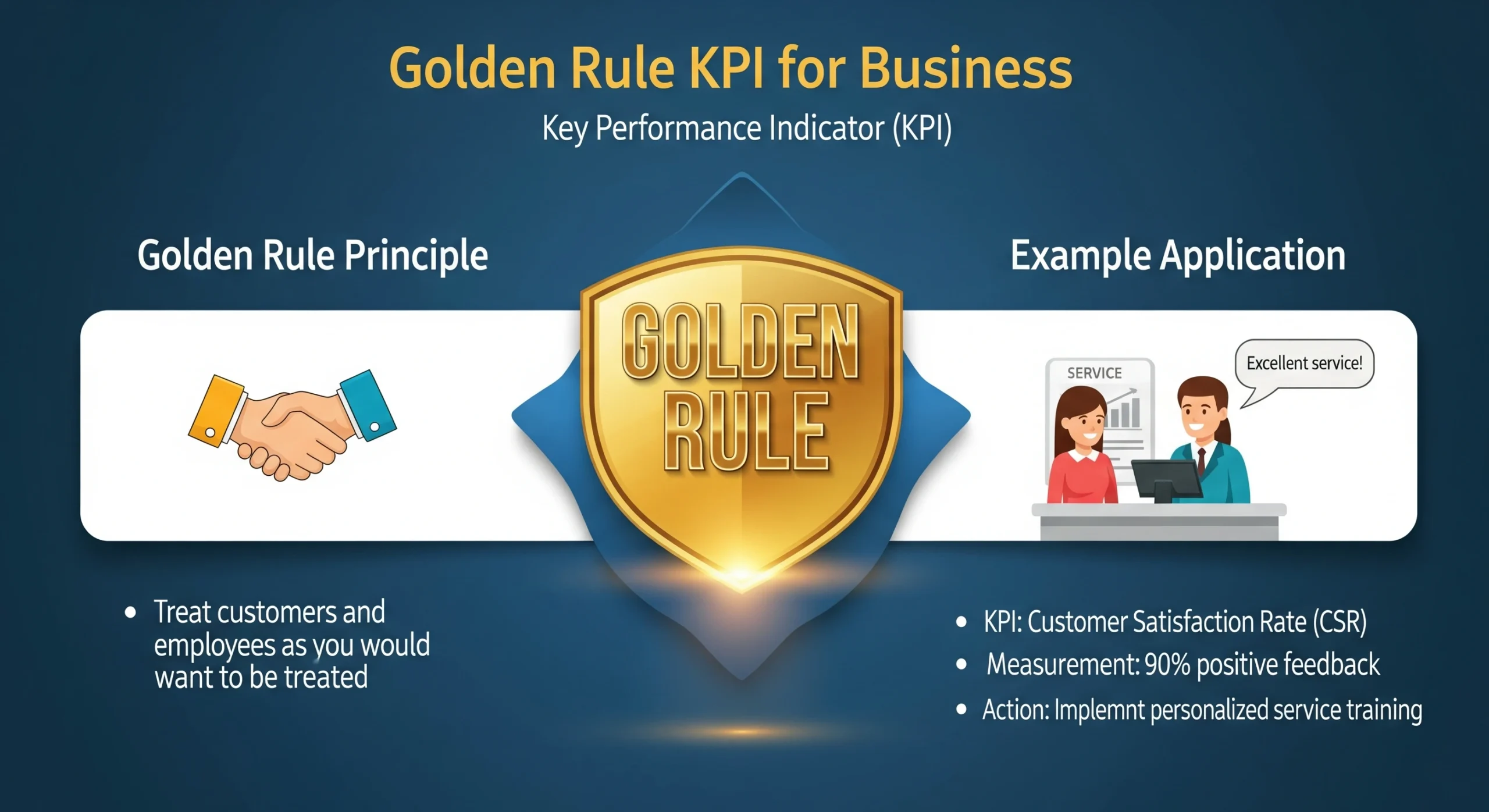on this page, you will learn How FreshBooks Used KPIs to Turn a Struggling Startup into a $220M Success Story with Casestudy. FreshBooks uses KPIs to improve customer experience, streamline operations, and drive growth—especially for small businesses and freelancers. One standout case is Trigg, a company that scaled recurring billing with FreshBooks to manage thousands of monthly payments efficiently.
How Freshbooks use KPI for Success
FreshBooks, the cloud accounting platform founded in 2003, faced a major challenge in 2014. Growth had slowed to just 9% year-over-year, and the company was running out of cash. Yet, within three years, FreshBooks transformed itself from near collapse into a thriving business that sold for $220 million in 2021.
The secret? A disciplined, data-driven focus on Key Performance Indicators (KPIs) that guided every decision across product, marketing, and partnerships.

on this page, you will get detailed information about KPI, benefits, Important, and Examples, Keep reading this page.
FreshBooks Key Performance Indicators Examples
Phase 1: The KPI Revolution (2015–2018)
When FreshBooks realized vanity metrics like page views and social likes weren’t driving results, leadership redefined success around seven core KPIs that directly influenced growth and profitability.
| KPI | 2014 (Before) | Target | 2018 (After) | Key Action Taken |
|---|---|---|---|---|
| Weekly Active Users (WAU) | 41,000 | 100,000 | 142,000 | Removed 37 unnecessary features to simplify the product |
| Net Revenue Churn | -4.8% | < 1% | -0.3% | Created a “Customer Success” team to personally contact inactive users |
| Magic Moment Speed | 18 minutes | < 3 minutes | 2 min 41 sec | Redesigned onboarding process for faster activation |
| Trial → Paid Conversion Rate | 12% | 25% | 29% | Added instant demo videos and live chat support |
| Customer Acquisition Cost (CAC) | $412 | < $180 | $178 | Shifted from paid ads to SEO and content marketing |
| Annual Recurring Revenue (ARR) | $11M | $50M | $53M | Focused exclusively on small businesses (1–10 employees) |
| Net Promoter Score (NPS) | 41 | > 70 | 82 | Improved team morale through better work culture |
Every Monday at 9:00 AM, the executive team reviewed a live dashboard showing these seven KPIs. Each metric was color-coded and updated weekly, keeping the company accountable and transparent.
This approach helped FreshBooks increase revenue fivefold, reduce churn, and become one of the most customer-loved SaaS companies in its space.
Phase 2: Building a KPI-Driven Partner Ecosystem
After stabilizing its core operations, FreshBooks expanded its focus to ecosystem growth through partnerships and integrations. The company discovered that customers using more third-party integrations (like payroll, CRM, and lending tools) were far more likely to stay subscribed long-term.
To scale this advantage, FreshBooks developed a robust Partner Program KPI framework, focusing on:
- API Usage: Measuring integration adoption and performance through analytics.
- Business Impact: Tracking how integrations influence churn, Average Revenue Per User (ARPU), and Lifetime Value (LTV).
- Developer Engagement: Monitoring API activity to grow the developer community.
- Partner Revenue: Calculating revenue from referrals, partner-driven acquisitions, and shared deals.
By aligning its partner strategy with these KPIs, FreshBooks optimized which integrations to support, identified high-value partnerships, and justified ongoing investment in API development. This data-led approach reduced churn and increased customer lifetime value, reinforcing steady growth.
Phase 3: Applying KPIs Across Customer Success Stories
FreshBooks also enabled its customers to use KPIs for their own business optimization. Several case studies highlight how KPI tracking powered real-world success:
- Trigg – Automating Recurring Billing at Scale
- Challenge: Managing thousands of monthly transactions manually.
- KPIs: Payment success rate, automation efficiency, customer retention.
- Result: Automated billing reduced missed payments and stabilized cash flow.
- Creative Agency – Fixing Cash Flow Instability
- Challenge: Late payments from clients disrupted operations.
- KPIs: Days Sales Outstanding (DSO), invoice aging, payment collection time.
- Result: FreshBooks shortened payment cycles and improved forecasting accuracy.
- Breath & Taxes CPA – Enhancing Client Relationships
- Challenge: Balancing client service with efficiency.
- KPIs: Response time, client satisfaction, task completion rate.
- Result: Improved communication and higher client retention.
- GreenBanana – Scaling Financial Management
- Challenge: Managing rapid growth and profitability tracking.
- KPIs: Revenue growth, expense accuracy, profit margins.
- Result: Real-time reporting improved decision-making and growth management.
Tools That Empower KPI Tracking
FreshBooks integrates KPI visibility directly into its platform, offering:
- Real-Time Dashboards: Continuous monitoring of income, expenses, and overdue invoices.
- Time Tracking: Insights into billable hours and productivity metrics.
- Expense Reports: Cost control and profit margin analysis.
- Client Reports: Behavioral and payment trend tracking for better retention strategies.
The FreshBooks System for Scaling with KPIs
FreshBooks’ turnaround success was built on a simple, repeatable framework:
- Focus on the Right 3–7 KPIs: Eliminate vanity metrics and measure only what drives your primary business goal.
- Make KPIs Visible: Display dashboards company-wide to promote transparency and alignment.
- Act Weekly: Use structured meetings to identify owners, diagnose weak spots, and run targeted experiments to improve red metrics.
Outcome and Legacy
From 2014’s near-bankruptcy to a 2018 profit surge and a $220 million exit in 2021, FreshBooks proved that KPI discipline can redefine a company’s destiny.
Their strategy of combining product simplification, customer-centric support, and data-driven partnerships created lasting business value — and an operational playbook that any company can adapt.
Want to replicate this?
Define your one-year goal, select 3–5 KPIs that directly ensure success, and track them visibly every week.
Do this consistently, and you’ll see the same kind of scalable growth FreshBooks achieved.
Inside FreshBooks’ $220M KPI System: The Real Blueprint That Saved the Company
Between 2015 and 2018, FreshBooks—the cloud accounting software company—rebuilt its operations around a precise, measurable KPI system that ultimately transformed it from a struggling startup into a $220 million success story. What follows is the exact behind-the-scenes breakdown of how the FreshBooks leadership team executed this transformation, as implemented by CEO Mike McDerment, VP of Product Levi Cooperman, Head of Growth Erin Bury, and other department heads.
1. The Tools and Technology Stack
FreshBooks didn’t just track KPIs—they engineered a data ecosystem to make metrics visible, reliable, and actionable across the entire company.
| Layer | Tool | Purpose |
|---|---|---|
| Data Warehouse | Snowflake (adopted in 2016; previously Stitch + Redshift) | Centralized all customer and product data |
| KPI Calculation | Looker (2015–2021) | Built live dashboards and reports |
| Data Pipeline | Segment → Snowflake | Captured every user click and event |
| TV Dashboards | Geckoboard + Looker Blocks | Displayed live metrics on seven 55-inch screens at the Toronto HQ |
| Mobile Access | Looker Mobile + iPhone Shortcuts | CEO checked metrics daily at 6:12 a.m. |
| Alerts | Custom Slack “KPI-Bot” | Sent alerts when any KPI dropped more than 5% week-over-week |
This system ensured everyone—from leadership to entry-level staff—was watching the same, real-time performance data every day.
2. The Seven Core KPIs (2017 Version)
FreshBooks operated around seven company-wide KPIs, each clearly defined, formula-based, and owned by a specific leader.
| KPI | Definition | Formula | Owner | Update Frequency |
|---|---|---|---|---|
| Weekly Active Users | Distinct users who sent an invoice or recorded an expense within the past week | Count of unique user IDs (7-day activity) | Levi Cooperman (Product) | Every 4 hours |
| Net Revenue Churn | Percentage of recurring revenue lost (after expansion revenue) | (Lost MRR – Expansion MRR) ÷ Previous MRR × 100 | Farah B (Finance) | Monthly |
| Magic Moment Speed | Median time for a new user to send their first invoice | Measured from trial start to first invoice | Sunita (UX) | Real-time |
| Trial → Paid Conversion | Trials converted to paid users | Paid customers ÷ Trials from 21 days prior | Erin Bury (Growth) | Daily at 3 a.m. |
| Customer Acquisition Cost (CAC) | Marketing costs per new paid customer | (Ad spend + Salaries + Tools) ÷ New paid customers (30 days) | Erin Bury (Growth) | Monthly |
| Annual Recurring Revenue (ARR) | Yearly recurring subscription revenue | Sum of all MRR × 12 | Farah B (Finance) | Real-time |
| Net Promoter Score (NPS) | Customer satisfaction and loyalty measure | Average score from post-support and quarterly surveys | Lisa A (Support) | Daily |
Each KPI had one owner responsible for accuracy, trends, and reporting.
3. The Monday “Move the Needle” Meeting
Every Monday morning, FreshBooks ran a strict 37-minute meeting focused solely on KPI performance. The agenda never changed, and the meeting never went over time.
| Time | Agenda Item | Owner/Notes |
|---|---|---|
| 9:00–9:05 | “Green / Yellow / Red” round — each KPI owner reports one word status | All seven owners |
| 9:05–9:15 | Deep dive on every red KPI (maximum 2 minutes each) | Owner of each red metric |
| 9:15–9:30 | Define one experiment per red KPI, written on whiteboard | Cross-functional team |
| 9:30–9:35 | Celebrate one win from the past week | Anyone |
| 9:35–9:37 | Two-sentence wrap-up | CEO (Mike McDerment) |
Latecomers were fined $20, donated to charity—a lighthearted way to enforce discipline.
4. The Physical War Room
The Toronto headquarters had a dedicated KPI War Room featuring seven large screens—each showing one core metric in real time.
- Color coding: Red (below target), Green (on track), Gold (new record).
- Post-it notes: Displayed current experiments below each screen.
This visual system made progress (or problems) impossible to ignore.
5. The “KPI Bible” Document
FreshBooks maintained a 63-page internal “KPI Bible” that served as the single source of truth for all performance data.
| Section | Content |
|---|---|
| Page 1 | KPI definitions (fixed and unchangeable) |
| Pages 2–8 | Historical performance from 2014 onward |
| Pages 9–45 | Log of every experiment ever run (over 1,200 by 2020) |
| Pages 46–63 | “Retired KPIs” archive—83 metrics intentionally discarded |
This living document institutionalized learning, preventing repeat mistakes and ensuring consistency across teams.
6. The Experiments That Drove the Biggest Results
FreshBooks used rapid, measurable experiments to improve KPI performance. Three stood out as the most transformative:
| KPI | Experiment | Result |
|---|---|---|
| Magic Moment Speed | Reduced onboarding form fields from 12 to 3 | Time to first invoice dropped from 18 minutes to 4 minutes within 72 hours |
| Trial → Paid Conversion | Added a 42-second “See FreshBooks in Action” video on the thank-you page | Conversion rate jumped 84% in 30 days |
| Customer Acquisition Cost (CAC) | Cut Google Ads for brand terms and reinvested in SEO + YouTube | CAC fell from $412 to $178 in 9 months |
These quick, data-backed actions directly influenced user adoption, revenue growth, and profitability.
7. Templates and Replication System
To make their system repeatable, FreshBooks documented and shared all templates used internally. Anyone could duplicate the structure in minutes:
- 7-KPI Dashboard (Google Sheets) – live KPI tracking format
- Monday Meeting Template (Notion) – 37-minute meeting structure
- KPI Bible Starter (Google Doc) – full documentation framework
These templates together formed the backbone of a company-wide measurement culture—simple, transparent, and relentlessly focused on improvement.
Conclusion
FreshBooks’ turnaround wasn’t luck—it was process.
By defining seven precise KPIs, assigning ownership, and embedding visibility into every level of the company, they created a culture where data guided every action. Combined with fast experiments, public accountability, and a strong feedback loop, the result was a 5× revenue increase and a $220 million acquisition.





Leave a Reply